Skip to product information
-
Media gallery  Media gallery
Media gallery
-
Media gallery  Media gallery
Media gallery
-
Media gallery  Media gallery
Media gallery
-
Media gallery  Media gallery
Media gallery
-
Media gallery  Media gallery
Media gallery
-
Media gallery  Media gallery
Media gallery
-
Media gallery  Media gallery
Media gallery
1
/
of
7
SKU
3676
Studio Furniture of the Renwick Gallery
Smithsonian American Art Museum- Regular price
- $35.00 USD
- Regular price
-
- Sale price
- $35.00 USD
- Unit price
- / per
Shipping calculated at checkout.
Couldn't load pickup availability
Description
Description
Take a tour of the Renwick Gallery, the craft division of the Smithsonian, and enjoy an in-depth look at the artists and the work of this unparalleled collection of handmade contemporary furniture. This absorbing volume features profiles and interviews of 64 artists and reveals their artistic influences and interpretations along with 112 stunning photos of iconic work.
Details
Details
| Pages | 224 |
|---|---|
| Publish Date | 2008-09-01 |
| Series | |
| Size | 8.5" x 11.0" x 0.0" |
| Author | Oscar P. Fitzgerald |
Reviews
Reviews
a
akind Ghost Clock sculpture by Wendell Castle to the limited production stool by David Ebner, the collection highlights the astonishing
variety of the American studio furniture movement. In this catalogue, author Oscar P. Fitzgerald documents each
piece of furniture in a descriptive, illustrated entry. He also recounts the history of the collection's formation
in an introductory essay, which illuminates the rationale and aesthetic choices of each curator and notes various donors
and support organizations. Finally, Fitzgerald's statistical analysis of the collection, formulated from detailed interviews with the surviving artists, casts new light on workshop practices,marketing concerns and other aspects of the contemporary studio furniture movement. A foreword by noted scholar and curator Paul Greenhalgh gives readers a brilliant overview of the studio furniture field and the intimate role furniture plays in daily life.
About the Author: Oscar P. Fitzgerald earned his M.A. and Ph.D. in history from Georgetown University and served as director of the Navy Museum in Washington, D.C., until he decided to pursue full time his passion as a furniture historian
and decorative arts consultant. He is currently on the faculty of the Smithsonian Institution/Corcoran School Master's Program in the Decorative Arts, where he developed and teaches a core course on the studio furniture movement.His book Four Centuries of American Furniture, which includes coverage of the studio furniture movement, is the standard
reference work in the field. In 2004 he was awarded a prestigious James Renwick Research Fellowship, which
funded research for an essay published in the 2005 issue of Furniture Studio.
About the Book: The 84 pieces of studio furniture owned by the RenwickGallery of the Smithsonian American Art Museum constitute one of the largest assemblages of American studio furniture in the nation. Three former administrators
a
akind Ghost Clock sculpture by Wendell Castle to the limited production stool by David Ebner, the collection highlights the astonishing
variety of the American studio furniture movement. In this catalogue, author Oscar P. Fitzgerald documents each
piece of furniture in a descriptive, illustrated entry. He also recounts the history of the collection's formation
in an introductory essay, which illuminates the rationale and aesthetic choices of each curator and notes various donors
and support organizations. Finally, Fitzgerald's statistical analysis of the collection, formulated from detailed interviews with the surviving artists, casts new light on workshop practices,marketing concerns and other aspects of the contemporary studio furniture movement. A foreword by noted scholar and curator Paul Greenhalgh gives readers a brilliant overview of the studio furniture field and the intimate role furniture plays in daily life.
About the Author: Oscar P. Fitzgerald earned his M.A. and Ph.D. in history from Georgetown University and served as director of the Navy Museum in Washington, D.C., until he decided to pursue full time his passion as a furniture historian
and decorative arts consultant. He is currently on the faculty of the Smithsonian Institution/Corcoran School Master's Program in the Decorative Arts, where he developed and teaches a core course on the studio furniture movement.His book Four Centuries of American Furniture, which includes coverage of the studio furniture movement, is the standard
reference work in the field. In 2004 he was awarded a prestigious James Renwick Research Fellowship, which
funded research for an essay published in the 2005 issue of Furniture Studio.
About the Book: The 84 pieces of studio furniture owned by the RenwickGallery of the Smithsonian American Art Museum constitute one of the largest assemblages of American studio furniture in the nation. Three former administrators
d
division undergraduates through professional/practitioners; general readers.
Fitzgerald offers a long
c
color image and a brief accompanying artist biography. In all, this is a can't miss text for any collector of American studio furniture. See the original review here.
Oscar P. Fitzgerald's Studio Furniture of the Renwick Gallery (Fox Chapel Publishing, $35) serves as vital analysis of contemporary American studio furniture through the 84 examples from the museum's permanent collection. The catalog chronicles the history of the Smithsonian American Art Museum's Renwick Gallery, documenting each piece with a large full
c
cover that so beautifully illustrates such an important movement in modern craft.
Studio Furniture of the Renwick Gallery provides historical look at modern American furniture making
Studio Furniture of the Renwick Gallery published by Fox Chapel is a beautifully designed catalogue of the Renwick Gallery's collection of American studio furniture. Inside, author Oscar P. Fitzgerald documents each of the 84 pieces, and provides intimate interviews with many of the surviving artists, who share their inspirations, workshop practices, and more. Appreciated for its careful craftsmanship, beautiful wood, sculptural form, and narrative nature, the studio furniture collection on permanent display at the Smithsonian American Art Museum constitutes one of the largest assemblages of American studio furniture in the nation. From the one
f
format soft cover, Oscar Fitzgerald does an admirable job of describing each maker's importance to the movement, but the book is only as good as the collection itself, and time and again, I found a maker's signature pieces missing. Garry Knox Bennett, John Dunnigan, Wharton Esherick, Michael Hurwitz, Kristina Madsen, Jere Osgood, the names are right but the pieces weren't.
The curators had better luck with some than others. Wendell Castle and Sam Maloof got full justice. And I was exposed to wonderful pieces and makers I had never seen before. On the other hand, recent artists were included whose work is, frankly, mediocre. I saw a blasé version of a Windsor chair, a bad knockoff of a Maloof rocker, and a mediocre children's chair by someone who was briefly a student and apprentice and then left the field. And some true heavyweights were left out: David Lamb and Terry Moore, with their unmistakably contemporary but always sure handed takes on period furniture; Brian Newell and Michael Puryear, who do the same thing with Asian and African motifs, respectively. Check past back covers of Fine Woodworking for others.
I came away thinking that the way to do a definitive book on the studio furniture movement is not to base it on one exhibit, even one at the nation's greatest museum. Why be at the mercy of a curator's whimsy and the realities of collection when all you need are photos of the pieces, not the pieces themselves? I'll forward that thought to our books department here at the Taunton Press. Maybe they'll take up the mantle.
The best thing about museum collections is that the pieces are all actually there, to be experienced in person. That's also the problem with collections: that the pieces must actually be there. So any collection that purports to be representative of a major movement ends up hamstrung by logistical realities. I'm guessing here, but the seminal piece or piece must not be available in many cases.
In this beautiful, wide
a
as well as many lesser known makers. If you read this book one hundred years from now, i'm sure it would be as thought provoking as it is today. These are 84 great pieces, and
this is one great book.
The wide variety of landmark furniture pieces, no matter the style, is what makes this book so visually stunning. That, and the fact that all of the 84 pieces that comprise the collection are beautifully photographed and a short description about each maker and piece is included. Many of the great makers from the last 100 years are covered
c
clocks, chairs, stools, tables, benches, chests, music stands, and other pieces by artists such as Tage Frid, Rob Womack, Wendell Castle, and David Ebner. Fitzgerald, a furniture historian, decorative arts consultant, and teacher with the Smithsonian Institution, describes each piece, which is shown in a color photo, and provides a history and statistical analysis of the collection. The latter is based on interviews with the surviving artists and details workshop practices, marketing concerns, aesthetic influences, design approaches, and other aspects of the contemporary studio furniture movement. (Annotation 2009 Book News Inc. Portland, OR)
This catalog aimed at students, collectors, and furniture enthusiasts features the collection of American studio furniture at the Renwick Gallery of the Smithsonian American Art Museum in Washington, D.C., which consists of 84 pieces
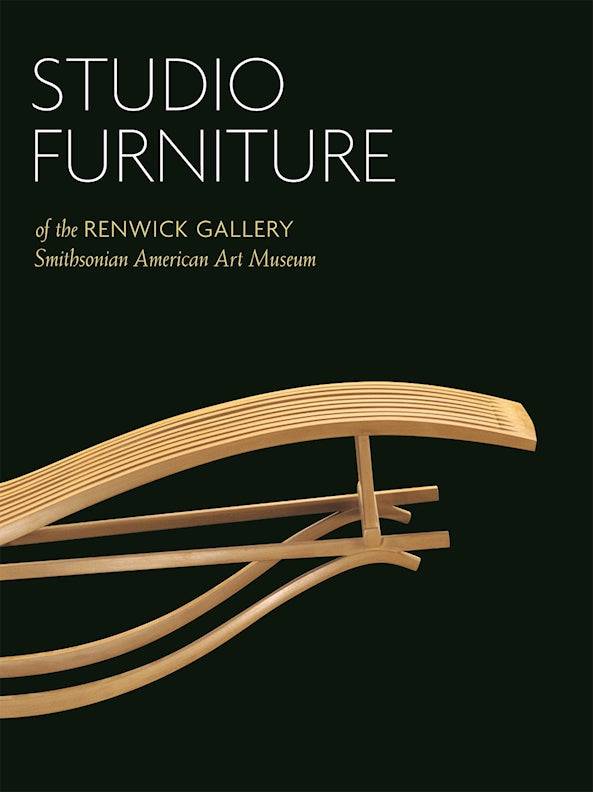
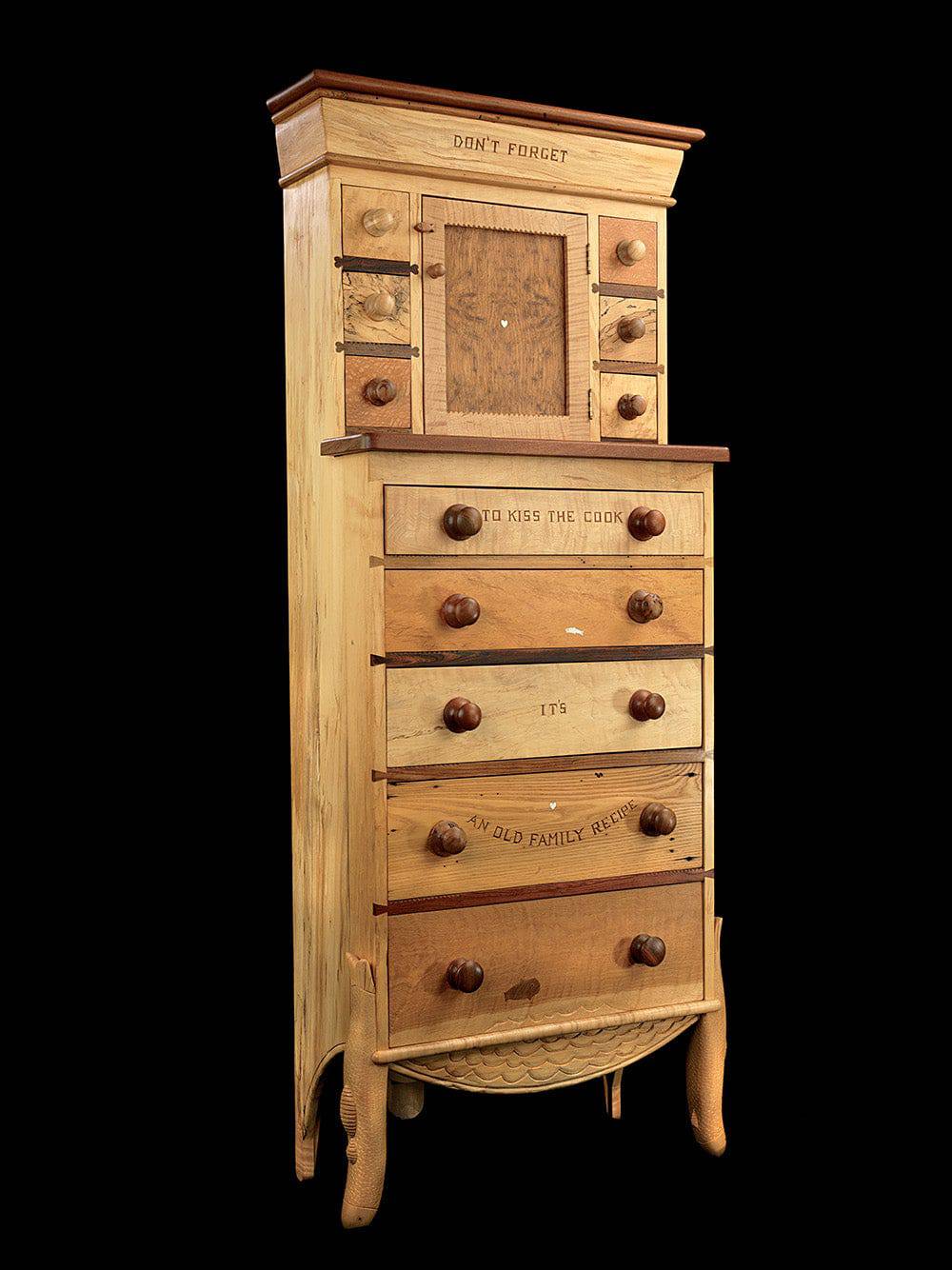
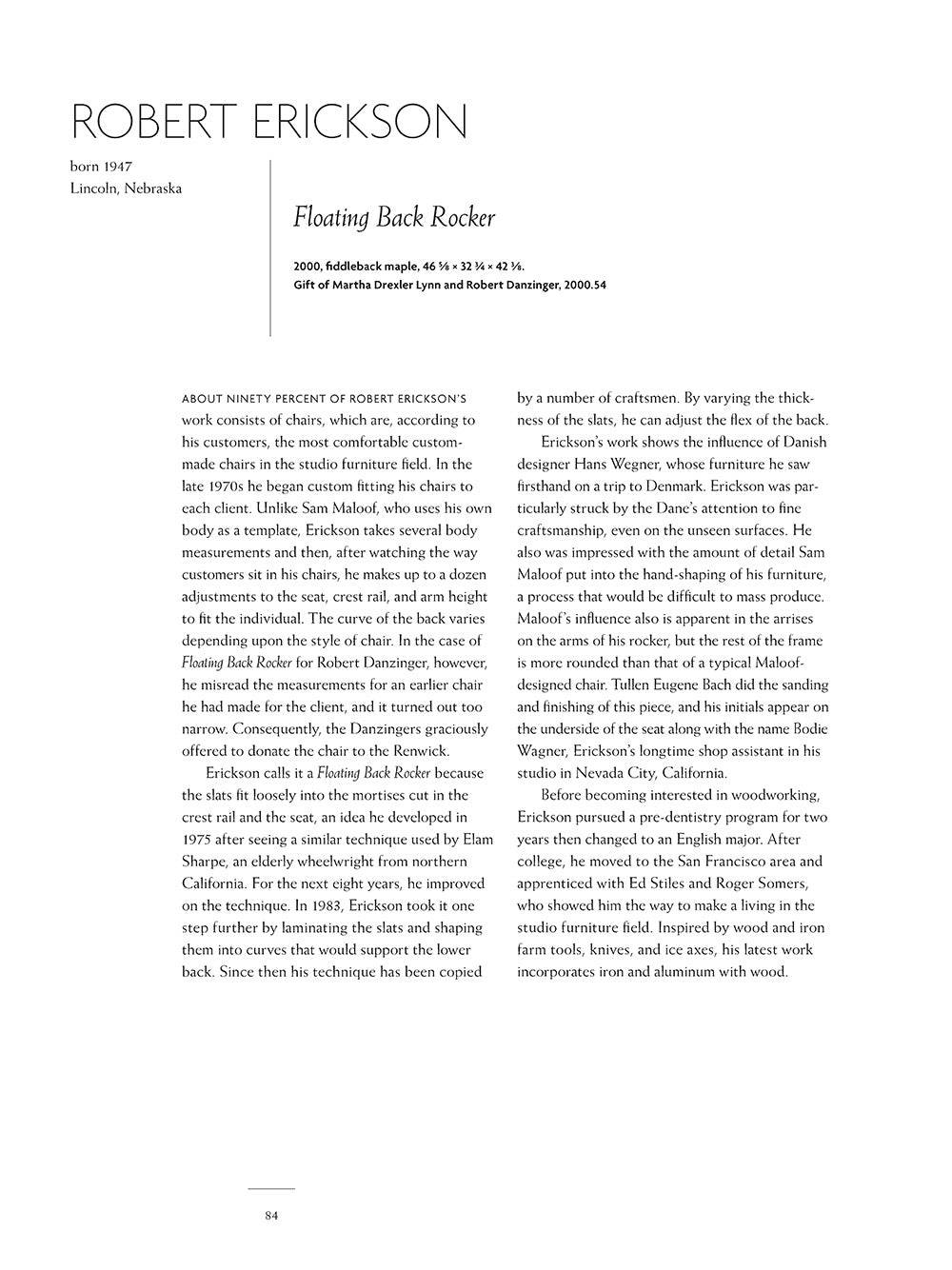
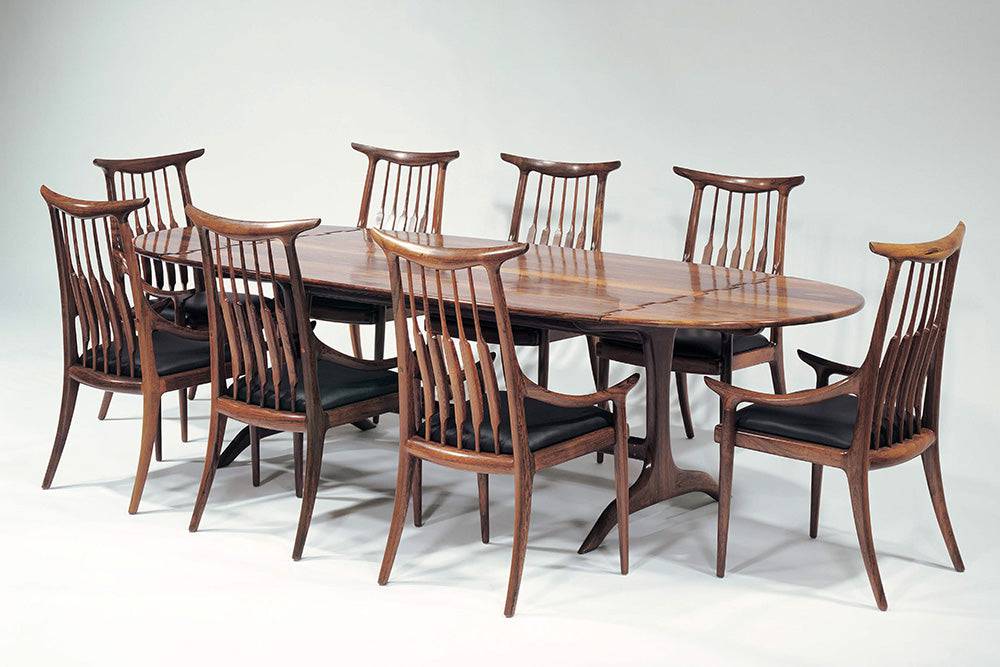
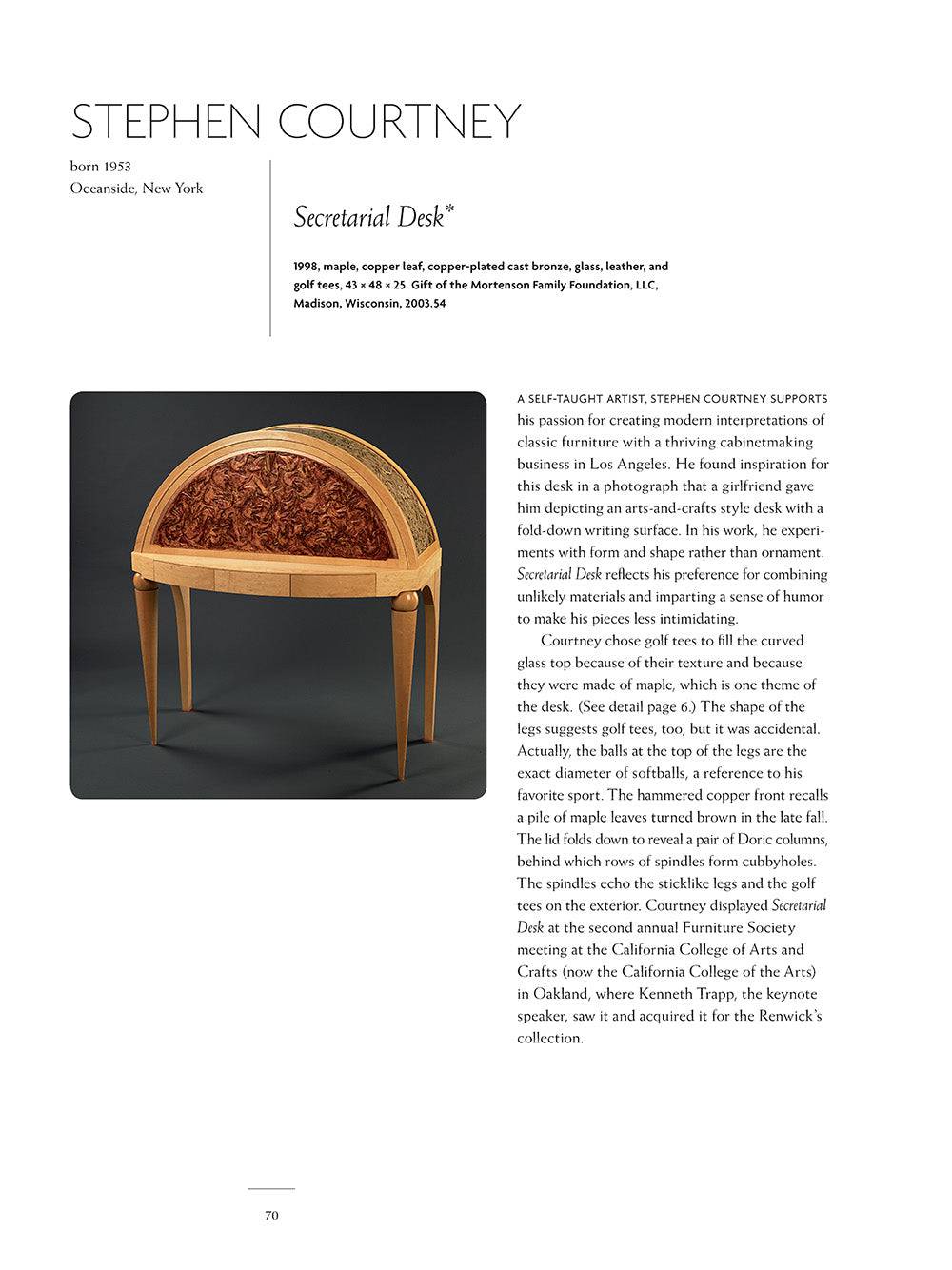
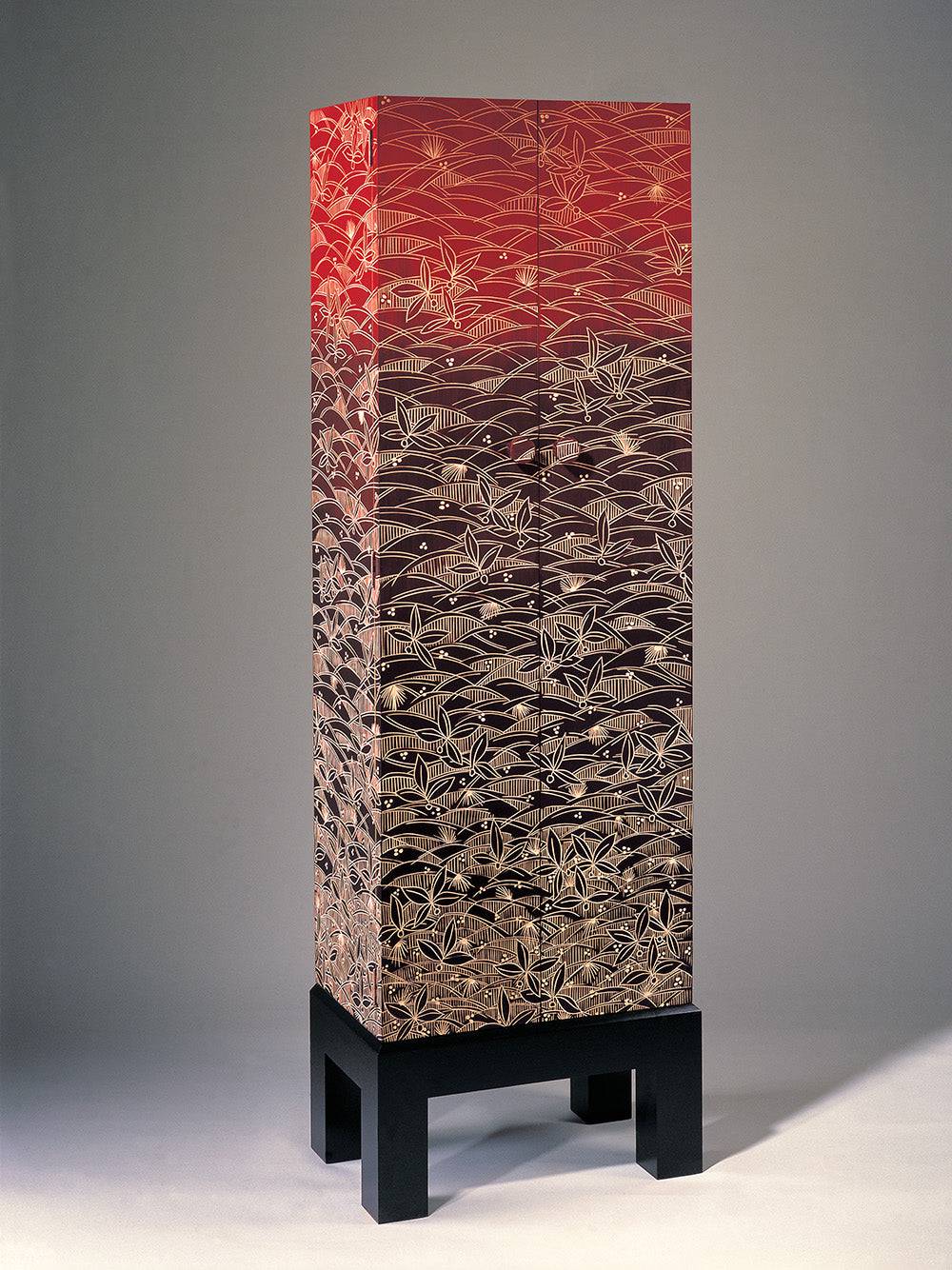
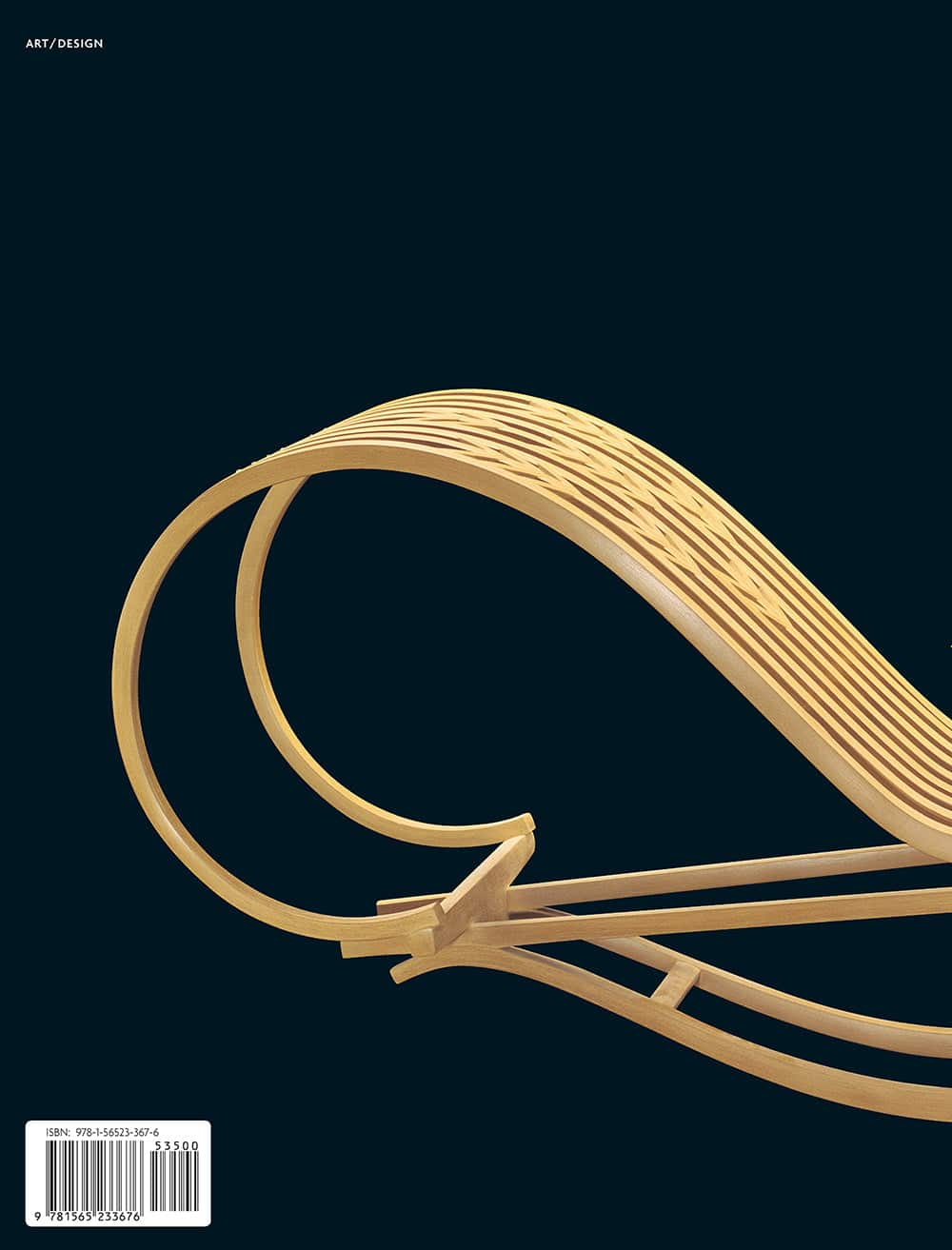
Notified by email when this product becomes available
PREVIEW
About the Author
Oscar P. Fitzgerald, Ph.D., earned his M.A. and Ph.D. in history from Georgetown University and served as director of the Navy Museum in Washington, D.C., until he decided to pursue full time his passion as a furniture historian and decorative arts consultant. He is a member of the faculty of the Smithsonian Institution/Corcoran School Master's Program in the Decorative Arts, where he developed and teaches a core course on the studio furniture movement. His book Four Centuries of American Furniture is the standard reference work in the field. Fitzgerald's 2008 book, Studio Furniture of the Renwick Gallery, chronicles the development and expansion studio furniture movement in the United States through the Renwick Gallery's collection. In 2004, he was awarded a prestigious James Renwick Research Fellowship, which funded research for an essay published in the 2005 issue of Furniture Studio
You May Also Like
Be in the Know
Learn about the newest releases, online promotions, special events and more!
- Choosing a selection results in a full page refresh.







